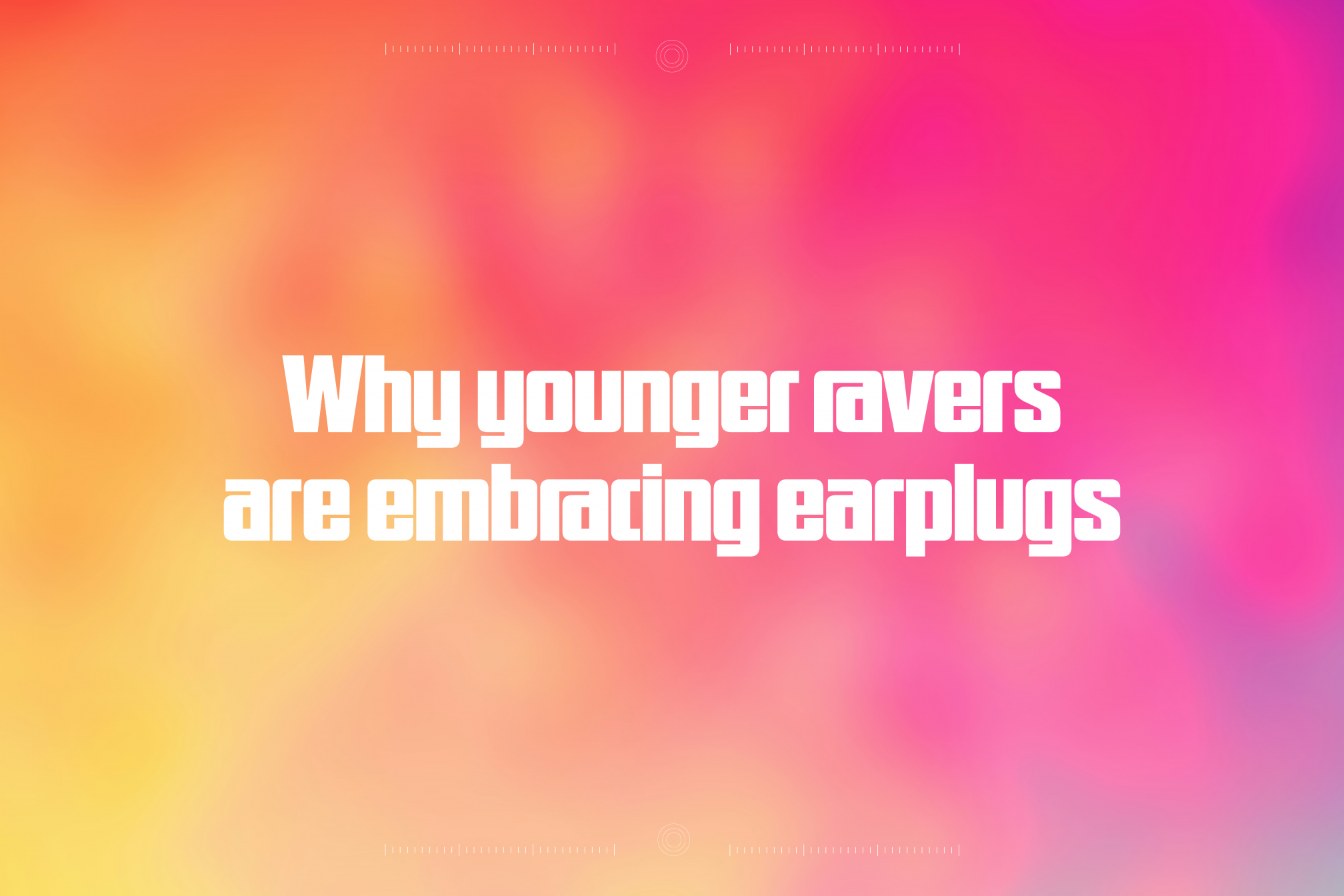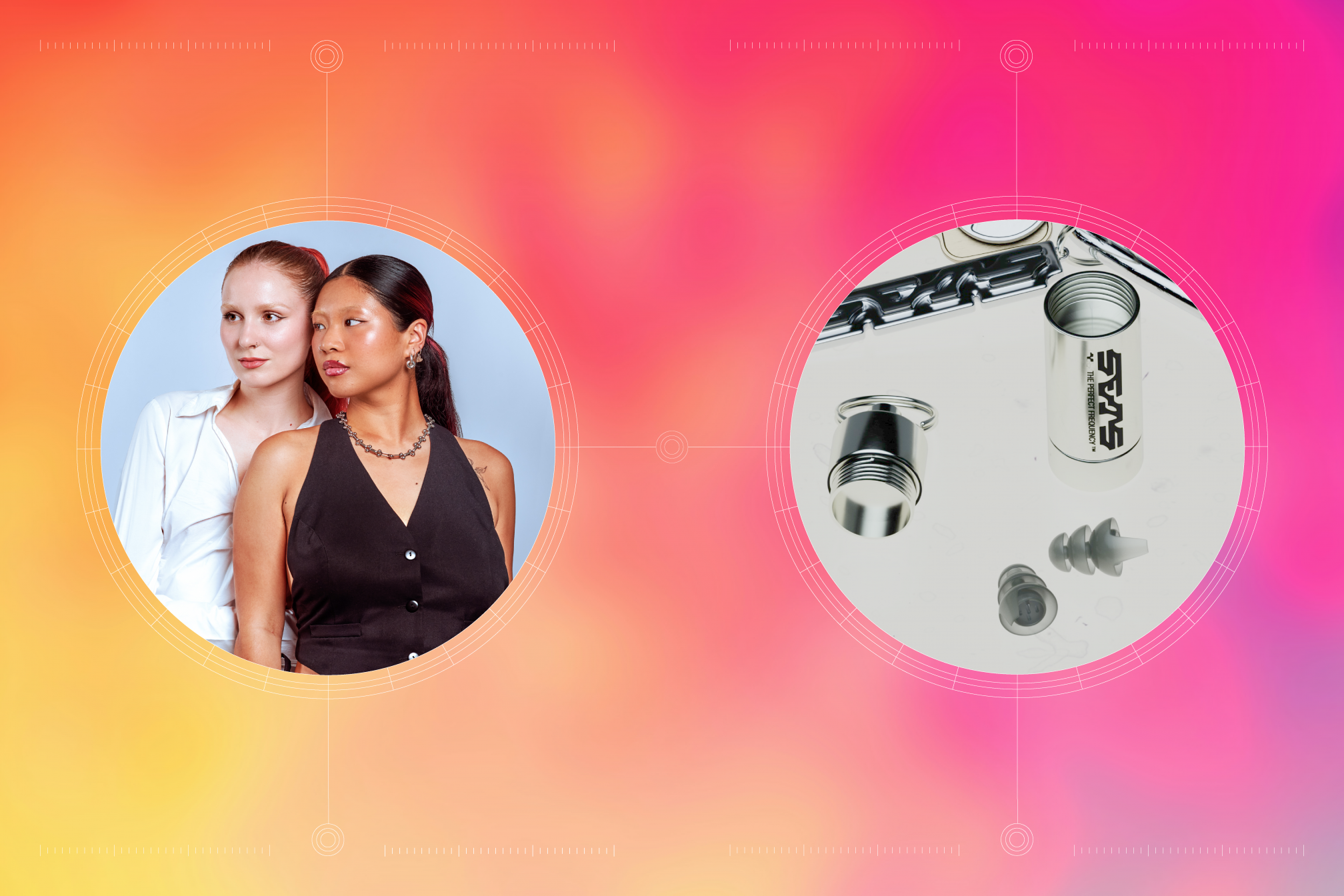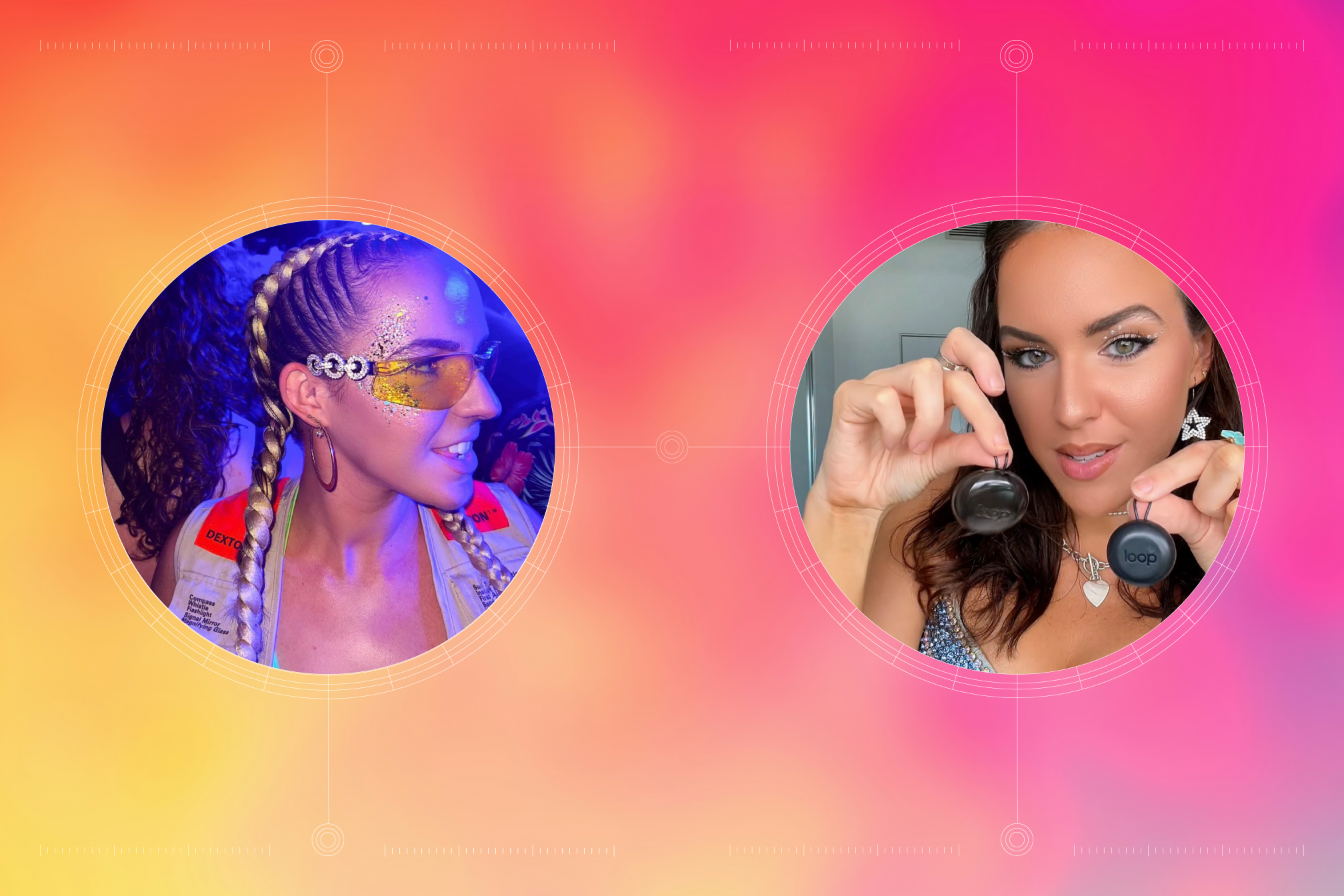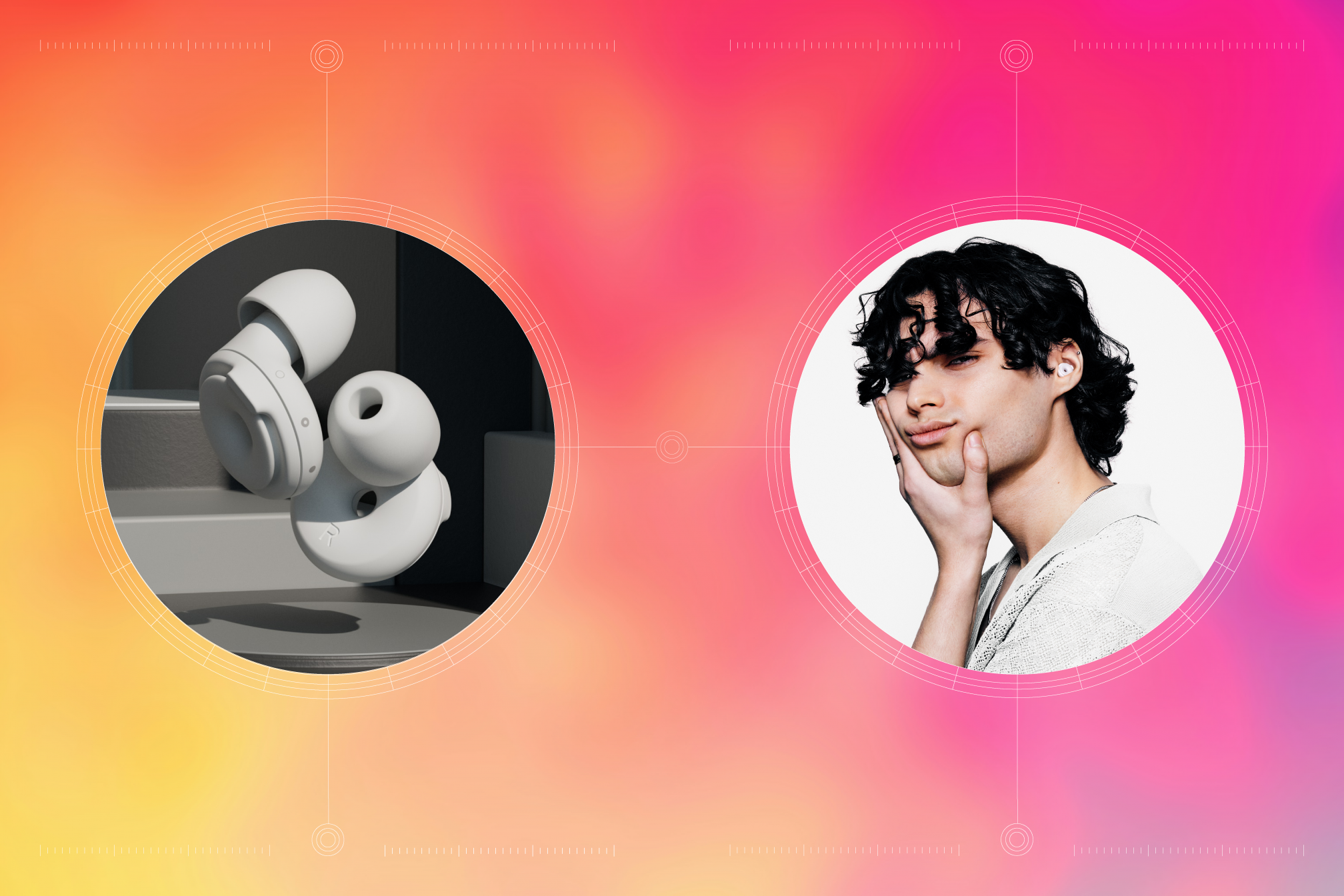 Features
Features
Why younger ravers are embracing earplugs
Gen Z and millenials are better at protecting their ears than any generations that came before them, inspired by education, accessibility, fashion and wellness trends. Belle Richardson reports
Tinnitus Awareness Week 2024 takes place across February 5 - 11. We're joining the campaign with a series of features raising awareness about ear damage and promoting protection. Check out the ongoing series across our website and socials.
In the first weekend after lockdown, Goldie is playing a headline set at Motion in Bristol. After two years spent dreaming of the day I’d find myself dancing in a crowd again, I was finally there. Looking around, the crowd was young, all bearing the hallmark signifiers of Gen Z: baggy clothing, shaggy hair, and a distinctly curated grunge style. Young ravers like myself, eager to get on the dancefloor, some possibly even for the first time. On that dancefloor, under the flashing lights, something else caught my eye. Neatly nestled in the ear of a young clubber, among an array of metal adornments, sat an earplug. Though it piqued my interest, it was only when I saw the fourth, fifth, and sixth person wearing earplugs that I began to question if this was some sort of post-lockdown Gen Z trend I wasn’t privy to.
I’ve since discovered that any kind of exposure to loud sounds for extended periods can lead to ear damage, hearing loss and tinnitus. Crucially for those who love long sessions of booming bass, as the volume increases, so does the risk. According to an article published by Alpine, with every 3 decibels, the recommended time spent in exposure to loud sound cuts in half. With festival sound levels reaching up to 110db, above the generally accepted limit of 85dB where damage begins to be a threat, it means the recommended exposure time can be reduced to five minutes or less.
Read this next: The 13 best earplugs to protect your hearing in the rave
Three years on and word of earplugs is bubbling up further in the cultural consciousness of young ravers online. DJs, clubbers and festivalgoers are sharing their experiences with tinnitus, highlighting the importance of hearing protection at events. “Hot girls wear earplugs to raves,” and other similarly captioned videos have been increasingly cropping up in my TikTok feed. Earplugs are listed among ‘rave essentials’, alongside familiar favourites like chewing gum and portable chargers, indicating changing attitudes towards hearing protection from the old skool days when people would bury their heads in bass bins. But what’s driving this shift?
In the melting pot of content and culture that is TikTok, brands are sowing the seeds of awareness around the dangers of loud sound exposure. Through combined efforts of influencer marketing, accessibility, branding and design, earplugs are cooler than ever and available for purchase at the click of a button. On top of this, studies suggest Gen Z and millennials care more about health than previous generations, and with unlimited access to information at their fingertips, it takes one quick Google search to learn why your ears ring after a night out.
Though it would be a sweeping generalisation to assume all young people care about their health, especially in the context of nightlife and clubbing, it cannot be denied that Gen Z and millennials have grown up in the age of information. Furthermore, a large portion of that group had their formative years defined by a global pandemic that spread a worldwide health panic, the effects of which we are witnessing still. The result is that younger ravers are more protective of their hearing than ever before, and as you might expect, brands are tapping into this changing attitude to further fuel it.

The concept of earplugs is not new, though. According to a study published by The Hearing Review, earplugs were first patented in 1884. With initial innovations being led by the military, earplugs have since evolved to suit several uses from government to professional, medical and personal use. In the music industry, companies such as ACS have been fitting performing artists with earplugs since 1994.
Jono Heale, a tinnitus educator and director of ACS customs, sheds light on the role of education in changing attitudes towards earplugs. “What struck me was that there was no education around hearing health back in the day,” he remarks. “I’d go to rock gigs where there was no health and safety at all…you’d come out completely deaf.” After a lifetime in the music industry permanently damaged his hearing, Jono now works with ACS to improve education and awareness around the risks of loud sound exposure. “The culture’s changing for sure,” Jono says.
Read this next: 9 ways to make living with tinnitus easier
Doc D, a US-based physician who makes content online on various rave-related topics, including the importance of protecting one's hearing, has also noticed a rise in earplug usage. “I personally see more and more ravers including earplugs in their concert experience,” she says. Increasing awareness through social media and the accessibility of earplugs commercially are among the reasons Doc D suggests earplugs are becoming more commonly accepted. The earlier in their life people start wearing earplugs the better. As the raver-turned-physician warns, loud sound exposure at a young age can “hasten and compound” the progression of an age-related hearing loss called Presbycusis. “As a raver in my mid-30s I’m not taking any chances… hearing protection is a must.”
From a sales perspective, there’s evidence supporting the idea that earplug use is on the rise. ACS, the UK’s leading supplier of custom moulded earplugs, revealed that “coming back from COVID, consumer sales have gone up 34.7%.” Whether that indicates a worldwide acceptance of the importance of earplugs is unclear. Though, according to Jono Heale, the UK is lagging behind other nations in Europe when it comes to taking the issue seriously. “In Amsterdam and other parts of Europe, they’re more conscientious about their hearing, it's been exponential,” he says.

Revolutionising the way we think about earplugs, is Loop. Merging style with functionality, Loop is designed to be seen. “Our award-winning design teams are inspired by jewellery, wearable tech, and fashion accessories,” Dimitri O, co-founder of Loop tells me. Offering earplugs in eye-catching colours and metals, Loop challenges the idea that hearing protection is something to hide. “The key factors driving customers to choose and buy Loops are our design, style, vibrant colours, and versatility” Dimitri revealed.
Launching its first earplug in 2018, Loop now stocks a range of earplugs for personal use. Offering noise reduction from 16 - 26 dB, Loop can be used anywhere from at home to the office to festival grounds. With a content strategy based around de-stigmatising hearing protection, Loop works with influencers, DJs and festivals, spreading awareness directly from within the community. Using social platforms to educate young ravers about the risks of hearing loss from loud sound exposure, Loop is successfully propelling the conversation forward into the cultural psyche of rave content online.
Read this next: The different types of tinnitus and how to spot the signs
One such supporter is 26-year-old Coco Bevan, a DJ, vocalist, and content creator from Australia. On the importance of fashion, Coco told me: “I am no stranger to putting my outfit at the top of a priority list for a night out”, adding that the Loop earplugs she uses are “sparkly and sleekly designed, which makes them fun to style with my outfits.” Support from voices within the community, such as Coco’s, is helping to place earplugs into the limelight. “Wearing earplugs has genuinely become the new social norm!” Coco says. “And it really has taken off within the past year.” Interestingly, the raver and DJ reckons the youth are leading the way. “The younger demographic are the ones wearing them the most, and that is what’s pushing earplugs to be cool.”
Though Loop earplugs are for people of all ages, Dimitri revealed the company's “main supporters” are Gen Z and millennials, suggesting that young people could be at the forefront of changing attitudes towards earplugs. “We can see this on festival grounds, where the number of festivalgoers sporting earplugs visibly increases each summer.” Revealing that Loop has seen a global increase in the awareness and demand for hearing protection, Dimitri adds:“The mindset is shifting, and Loop is proud to play a role in this behavioural change.”
Also on a mission to educate Gen Z about hearing protection from within the rave community is Sets. Founded in New Zealand, the passion project turned earplug brand was started by 27-year-old best friends Grace and Em. Inspired by their experiences with tinnitus and dangerously loud gigs, Grace and Em recognised a need for an attractive product. Sets are made by ravers for ravers, targeting Gen Z through a carefully curated brand that is both playful and sincere. Sets' online content ranges from tongue-in-cheek infomercial-style videos to casual clips of the founders themselves partying under captions like “me and my friends wear earplugs to festivals.” Combining the powers of sleek, stylish, rave-inspired branding, and a cheeky sense of humour, Sets are nailing it. “Enjoy your night out, with no more ringing and no more damage. Practice safe Sets,” says one informative video.
ACS has also expanded its range of colours to appeal to the fashion-conscious, but above all else, the mission is about protecting people's ears, Jone tells me. He says the decision to wear earplugs is rooted in an understanding of the risks associated with prolonged exposure to loud music and ACS continues to work with charities such as Musicians UK, Tinnitus UK, Musicians Union, and the Nighttime Industries Association to promote awareness.

The work of brands like Loop, ACS and Sets to improve the accessibility, appeal, and awareness of earplugs is aiding an increase in earplug usage among young people. However, education and awareness surrounding loud sound exposure and the risks of tinnitus are still needed. A report conducted by Loop found that 62% of Americans between the ages of 15-45 think it is normal to experience ringing ears after going out. According to a report by the British Medical Journal, “over 1 billion young adults are at risk of permanent hearing loss due to unsafe listening practices.”
But like ACS and Loop, Grace and Em believe attitudes are changing. On this topic, the Sets founders say their marketing strategy has even changed to accommodate the shift in demand. “We used to push and push for education around earplugs… now people come to us,” Grace says. A recent McKinsey report found that Gen Z and millennials are purchasing more wellness products and services than previous generations. “It’s actually crazy, we’ve really seen a huge shift,” says Em. “Now people are seeking it out, and it's in demand.”
Whether it’s wellness, education, accessibility or branding driving today's demand for earplugs, there are signs of a cultural shift taking place. Seemingly at the forefront of that demand are today’s youngest ravers. With their unlimited access to information, interest in wellness and the increasing availability of products, it’s a perfect storm. There is still more that could be done, especially to educate those outside of rave communities, but as more and more people embrace earplugs, they are paving the way for a future in which music can be enjoyed without damaging hearing.
Belle Richardson is Mixmag's Digital Intern, follow her on Twitter


